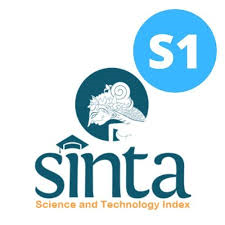BEHIND THE SACRED TREE: LOCAL PEOPLE AND THEIR NATURAL RESOURCES SUSTAINABILITY
Abstract
Local communities have their own means of maintaining their traditional know-ledge and sustaining the production system of natural resources by designating the resources as sacred. Without the state's influence, local people have their own strategies to conserve the environment and resources, in ways which are more effective than those enforced by the state. A study done through interview, participatory observation, and ethnographic methods revealed that local people recognized two models of natural resources conservation. The first model is the designation of forests as sacred site, aiming at maintaining the sustainability of ecosystem and the second model refers to adoption of species as a sacred entity to sustain production system. Dynamic processes are operating in the sacredness of both forest and species.
Keywords
Full Text:
PDFReferences
ADIMIHARDJA, K. 2009. Leuweung Titipan: Hutan keramat warga Kasepuhan di Gunung Halimun. In: SOEDJITO, H., Y. PURWANTO. & E. SUKARA (Eds.). Situs keramat alami: Peran budaya dalam konservasi keanekaragaman hayati. Yayasan Obor Indonesia. Jakarta. p 78–85.
ARNSCHEDT, J. 2009. Debating nature conservation: Policy, law and practice in Indonesia. Leiden University Press. Leiden.
BAILLIE, J.E.M., HILTON-TAYLOR, C. & STUART, S.N. (Eds.). 2004. 2004 IUCN red list of threatened species: A global species assessment. IUCN, Gland, Switzerland and Cambridge, UK. xxiv + 191 pp.
BASO, G. 2009. Mopahilolonga katuvua: Konsepsi masyarakat adat Toro dalam mempertahankan kelestarian sumberdaya hutan. In: SOEDJITO, H., Y. PURWANTO. & E. SUKARA (Eds.). Situs keramat alami: Peran budaya dalam konservasi keanekaragaman hayati. Yayasan Obor Indonesia. Jakarta. p. 240–266.
DOVE, M,R., 2006. Indigenous people and environmental politics. Annual Review of Anthropology 35: 191-208.
DOVE, M.R., P.E. SAJISE & DOOLITTLE, A.A. 2011. Introduction: Changing ways of thinking about the relations of society and environment. In: DOVE, M.R., P.E. SAJISE & A. A. DOOLITTLE (Eds.). Beyond the sacred forest: Complicating conservation in Southeast Asia. Duke University Press. Dunham and London. p 1–34.
EMERTON, L. 2009. Making the case for investing in natural ecosystems as development infrastructure: The economic value of biodiversity in Lao PDR. In: Ninan, K.N (Ed.) Conserving and valuing ecosystem services and biodiversity : economic, institutional, and social challenges. Earthscan. London, UK. p 85–97.
ERNST, T. M. 1999. Land, stories, and resources: Discources and entification in Onabasulu modernity. American Anthropology 101 (1): 88–97.
FAKHROZI, R. 2009. Etnobotani masyarakat suku melayu tradisional di sekitar Taman Nasional Bukit Tigapuluh: Studi kasus di desa Rantau Langsat, Kec. Batang Gangsal, Kab. Indragiri Hulu, Provinsi Riau. [Skripsi]. Institut Pertanian Bogor. Bogor.
HARDIN, G. 1968. The tragedy of the commons. Science. new series 162 (3859): 1243–1248.
HARRIS, M. 1964. The nature of cultural things. Random House. New York.
HARRIS, M. 1966. The cultural of India’s sacred cattle. Current Anthropology 7: 51–59.
ISKANDAR, J. 2009. Pelestarian daerah Mandala dan keanekaragaman hayati oleh Orang Badui. In: SOEDJITO, H., Y. PURWANTO. & E. SUKARA (Eds). Situs keramat alami: Peran budaya dalam konservasi keanekaragaman hayati. Yayasan Obor Indonesia. Jakarta. p 86–111.
KABER, Y. R. B. & MENTANSAN, G. 2009. Faknik: Kepercayaan masyarakat adat Biak-Numfor dan upaya konservasi sumberdaya laut (Studi kasus pembentukan daerah perlindungan laut di Pulau Owi vs situs keramat alami Pulau Pakreki, Kepulauan Padaido, Kabupaten Biak Numfor). In: SOEDJITO, H., Y. PURWANTO. & E. SUKARA (Eds.). Situs keramat alami: Peran budaya dalam konservasi keanekaragaman hayati. Yayasan Obor Indonesia. Jakarta. p 192–266.
KAMAU, E. C. & WINTER, G. (Eds). 2009. Genetic resources, traditional knowledge and the law: Solutions for access and benefit sharing. Earthscan. UK and USA.
LAUER, M., & ASWANI, S. 2009. Indigenous ecological knowledge as situated practices: Understanding fisher’s knowledge in the western Solomon Island. American Anthropologist 11 (3): 317–329.
LUBIS, Z. B. 2009. Revivalisasi situs keramat alami di Kabupaten Mandailing Natal. In: SOEDJITO, H., Y. PURWANTO. & E. SUKARA (Eds.). Situs keramat alami: Peran budaya dalam konservasi keanekaragaman hayati. Yayasan Obor Indonesia. Jakarta. p 165–191.
MARYANTO, I., RAHAJOE, J. S., MUNAWAR, S. S., DWIYANTO, W., ASIKIN, D., ARIATI, S. R., SUNARYA, Y., SUSILONINGSIH, D. (Eds.). 2013. Bioresources untuk pembangunan ekonomi hijau. LIPI Press. Jakarta.
NINAN, K. N. 2009. Introduction. In: NINAN, K. N (Ed.) Conserving and valuing ecosystem services and biodiversity: economic, institutional, and social challenges. Earthscan. London, UK.
NOERDJITO, M. & MARYANTO, I. (Eds). 2001. Jenis-jenis hayati yang dilindungi perundang-undangan Indonesia. Balitbang Zoologi & Puslitbang Biologi-LIPI, The Nature Conservancy & USAID. Cibinong.
ORLOVE, B. S. & BRUSH, S.B. 1996. Anthropology and the conservation of biodiversity. Ann. Rev. Anthropology 25: 329-352
PELUSO, N. L. 1993. Coercing conservation?: The politics of state resource control. Butterworth-Heinemann. US.
PETERSON, R. B. 2010. Seeing (and doing) conservation through cultural lenses. Environmental Management 45: 5–18.
PORRINI, C., GHINI, S., GIROTTI, S., SABATINI, A.G., GATTAVECHIA, E. & CELLI, G. 2002. Use of honey bees as bioindicators of environmental pollution in Italy. In: DEVILLERS, J. & M.H. PHAM-DELEGUE. (Eds). Honey bees: Estimating the environmental impact of chemicals. Taylor & Francis, London, UK. pp. 186–247.
RAPPAPORT, R. A. 1968. Pigs for ancestors: Ritual in the ecology of a New Guinea. Yale University Press. New York.
RAPPAPORT, R. A. 1999. Ritual and religion in the making of humanity. Cambridge University Press. UK.
RIBBOT, J. C. & PELUSO, N. L. 2003. A theory of access. Rural Sociology 68 (2): 153–170.
SETYOWATI, F. M. 2003. Hubungan keterikatan masyarakat Kubu dengan sumberdaya tumbuh tumbuhan di cagar biosfer Bukit Duabelas, Jambi. Jurnal Biodiversitas 4 (1): 47–54.
SHOREMAN, E. E. & N. HAENN. 2009. Regulation, conservation, and collaboration: Ecological anthropology in the Mississippi Delta. Human Ecology 37: 95–107.
SNOGRASS, J. G., MICHEL, G., SATISH, K. S., YUVRAJ., MOHAN, S. J. A., BHARGAVA, N. K. & CHAKRAPANI, U. 2008. Witch hunts, herbal healing, and discourse of indigenous ecodevelopment in North India: Theory and method in the anthropology of environmentality. American Anthropologist 110 (3): 299–312.
SOEDJITO, H. 2009. Tanah ulen dan konsep situs keramat alami: Studi kasus di desa Setulang, Kabupaten Malinau, Kalimantan Timur. In: SOEDJITO, H., Y. PURWANTO. & E. SUKARA (Eds.). Situs keramat alami: Peran budaya dalam konservasi keanekaragaman hayati. Yayasan Obor Indonesia. Jakarta. p 267–280.
SOERIANEGARA, I. & LEMMENS, R. H. M. J. (Eds.). 1994. Prosea-timber trees (1). Major commercial timber. Prosea Foundation. Bogor-Indonesia
SOERIANEGARA, I. & LEMMENS, R. H. M. J. (Eds.).1995. Prosea-timber Trees (2). Minor commercial timber. Prosea Foundation. Bogor-Indonesia
TIPA, G. & WELCH, R. 2006. Co-management of natural resources: Issues of definition from an indegenous perspective. The Journal of Applied Behavioral Science 42(3): 373–391.
TRICAHYO, I.W., SIBORO, L & SURYADIPUTRA, I.N.N. 2004. Keanekaragaman jenis tumbuhan di hutan rawa gambut. Wetlands Internasional, CCFPI, & Wildlife Habitat Canada. Bogor.
WELKER, M. A. 2009. Corporate security begins in the community: Mining, the corporate social responsibility industry, and the environmental advocacy in Indonesia. Cultural Anthropology 24(1): 142–179.
WINARTO, Y. T. 2004. Seeds of knowledge. The beginning of integrated pest management in Java. Monograph 53. Yale Southeast Asia Studies. New Haven.
WOOD, D. & LENNE, J.M. 1999. Agrobiodiversity: Characterization, utilization, and management. CABI Publishing. New York.
Refbacks
- There are currently no refbacks.









